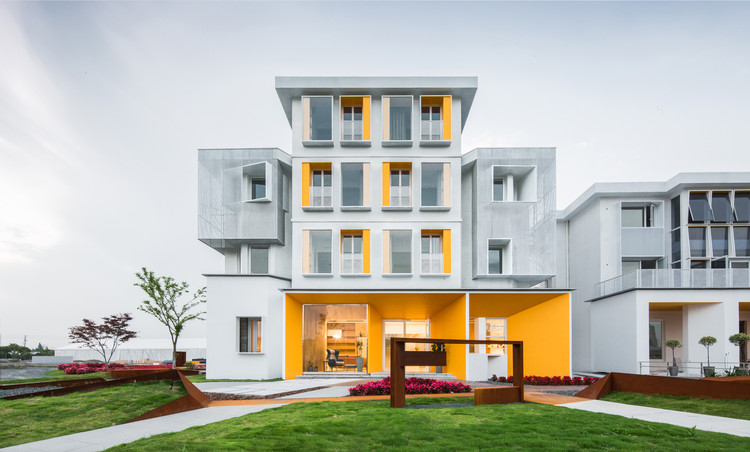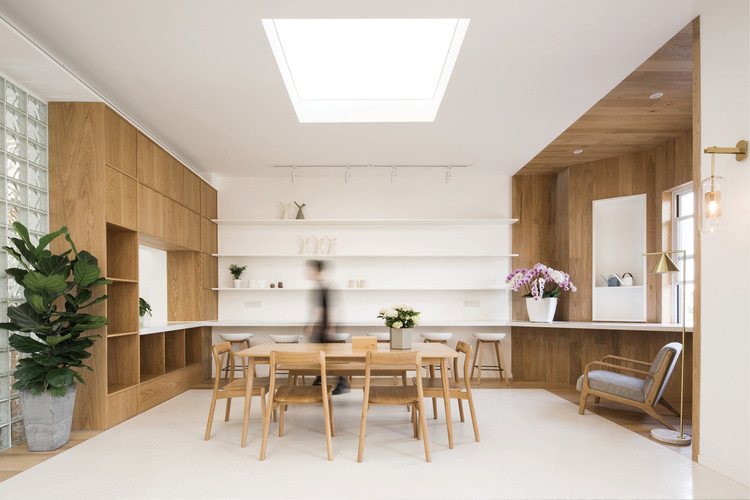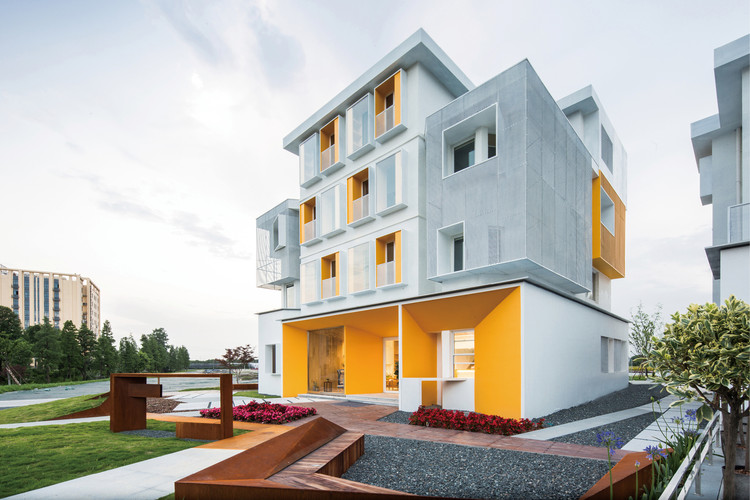
-
Architects: SSDesign
- Area: 3000 m²
- Year: 2018
-
Photographs:Qiu Ripei-AD Photography

Self-build house of farmer
As one of the important group involved in the rapid development of Chinese cities, farmers' self-building has distinctive Chinese characteristics. Under the mode of rapid expansion and construction, it has a group of morphological characteristics - individual independent colors and decorative elements pieced together by various styles. Farmers' self-built houses have spanned an era. They have replaced traditional wooden houses in the rapid development of urban construction. In today's urban renewal, they have gradually become ruins and problems in the development of new towns under the influence of land acquisition and demolition.

Value in ruins
Individual freedom: the privatization and freedom of farmers to build their own houses are relatively high in the category of residential buildings. Residents often make appropriate adjustments to their residences according to their own living needs. Whether they are balconies, warehouses or large eaves, these additional parts make the living atmosphere of the residences have more diverse connection with the external environment.

Group settlement: the self-built groups have the base of natural villages and often have a certain state, similar to small villages. Different from the rigorous " square grid" in urban planning, these seemingly unorthodox self-built buildings also have a relatively natural texture. Ethnic group awareness and intersection are their precious things, and these clustered elements have become the source of a collective life.

Regeneration in gardening
Hongyue gardening community is located in the Hongyue Gardening,Haining, Zhejiang. There are several groups of farmers who build their own houses within the park. Due to land policy, it is leased by enterprises, which is difficult to build after demolition and can only be put into used after rectification. The farmers' self-built houses in the park site have typical characteristics of Chinese rural houses. The materials and forms are mixed, the colors are different, the porch and eaves are not used, and the architectural groups are not integrated with the park environment.

Participants of nature
In the renovation design, the demolitions of farmers’ self-built houses are just partially revealed. Positive attitude and method have been taken to make the buildings that had messy colors and styles participate in the surrounding environment harmoniously. It has offered people diverse life spaces while become the community symbiosis with nature.

Creators of life
The design studies people’s living behaviors and did some creative construction on the porches, balconies and windows of the original houses based on various behaviors of people. It also creates more flexible spaces, which brings regions that only have one function more responsibility, thus making space more effective and flexible. More life spaces have been provided by the addition of sunrooms and bay windows, while steel meshes and grids create conditions for nature plants to grow, which makes it possible for residential architectures to interact with natural environment. In this connection, people can experience freedom and proximity brought by nature and discover more fun and imagination in nature life

A naturalized residential community
The remould self-built residential model is relatively diversified, which is divided into small hotels in the form of collective apartments, reception centers in the form of suites, and single houses in the form of families. At the same time, it is equipped with a leisure area that provides small restaurants and cafe. The building complex combines the landscape worked by professional designers around it, and the whole site is more eager to become a garden community full of popularity and natural vitality.

Not only in gardens, no matter where people are in the building, they have the opportunity to get close to nature. From balconies to porches, even in doorways and windows, there are places where people have leisure to fiddle with flowers and plants. These are places where sunshine and air are most abundant, i.e. places where residents live and communicate with nature most intensively, or rely on leisure sofa to bask in the sunshine in the portico, or sit on convex windows to browse books, or stay on balconies to take care of flowers and plants. These are all natural and leisurely life of users.

































